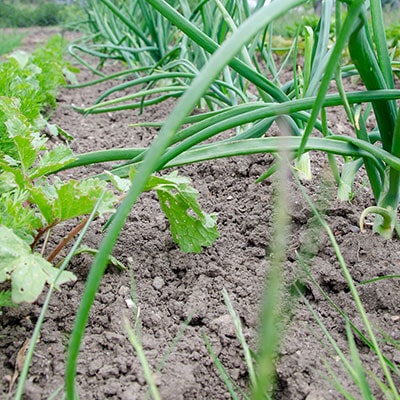
Spring is arriving and that means it is time to begin preparing for the planting of the spring vegetables. The process of growing vegetables can begin early with the sowing of seeds for both the spring and summer food harvests. At the least, the process can be started with thoughts of what may be planted when the soil is finally thawed and ready for sowing. This is the time for planning and for projects; spring is all about new beginnings and new births. To make the best of the birth of new spring vegetables, read the following advice:
Prepare the soil
Springtime is perfect for preparing soil for growing vegetables. This is the time to be adding organic matter such as compost, well-aged manure and worm castings to the soil. It is also a good time to clean up debris left from the winter and to cut away diseased or broken branches. Get the garden shed organised and ready whilst also checking the condition of sprinklers and other tools.

Growing spring vegetables
The time for starting seedlings for the growing season is spring. There are some spring vegetables like lettuces, peas, radishes, and carrots that can be sowed into the soil directly in the early spring. However, growing vegetables like warm-season tomatoes and peppers are best started by sowing the seeds indoors about six to eight weeks prior to the final frost date. The following is a list of early spring vegetables that are considered to be cool season vegetables; they actually thrive in the temperatures of the spring. Keep in mind that though these vegetables may be cold tolerant; a severe cold snap can still wipe them out. It is therefore important to be prepared with a drape of some sort, like old sheets, frost blankets, or newspaper, to cover any crops if a cold snap is expected, but make sure the covering is removed the following morning.
Beetroot
As soon as the soil can be worked in the early spring, sow the seeds. Beetroot prefers to be grown in sandy soil that is well drained. Since beetroot is a root, high nitrogen fertilisers should be avoided; they promote top growth at the expense of root development. The robust and uniform root development of beetroots is acquired with good soil aeration and consistent moisture. To avoid competition for nutrients, keep the areas around the beetroot weed free.
Broccoli
Seed for broccoli can actually be sown directly in the soil four weeks prior to the last frost date. Transplants of broccoli can be set out two weeks prior to the final frost date. Broccoli thrives in daytime temperatures of 55 to 65 degrees. Broccoli plants should be fed three weeks after transplanting with low nitrogen fertiliser.
Carrots
Seeds for carrots can be sown two weeks prior to the last frost date. These spring vegetables thrive in soil that is deep and loose, allowing them to form a robust root. Avoid too much nitrogen and weed the bed to avoid competition for nutrients. Thin seedlings when they are about two inches tall so there is approximately one to four inches between them. To keep carrots from turning green or bitter, cover their shoulders with a bit of mulch or soil.
Lettuce
Sow lettuce when the soil is workable, anytime in the spring. Lettuce should always be covered during cold snaps because it is a spring vegetable that is a bit sensitive to the cold. Daytime temperatures ideal for growing lettuce ranges from 16 to 22 degrees. Use a fertiliser high in nitrogen such as fish emulsion. Lettuce thrives with shelter from intense late spring sun, having the ability to grow in partial shade as well.
Onions
There are various methods from which onions can be grown, including from sets, small bulbs, or transplants. Regardless the method of growth these spring vegetables should be planted in early springs once the soil is workable. Short-day varieties can be planted in southern regions, while long-day varieties can be planted in northern gardens. Time-release fertiliser should be placed in the planting hole close to the roots.
Potatoes
The ideal time for planting potato sets, which are dried potato pieces with two to three eyes, typically coincides with the greening of grass. The soil for growing potatoes should be loose, fertile, and well drained. Cover these with soil as they mature to avoid burning.
Radish
No feeding is necessary for the sowing of radish seeds, about four weeks prior to the last frost date. However, the soil needs to be fertile and well drained. Check on radishes regularly because they are quick to mature. Harvest radishes when they are of edible size.
Spinach
Sow spinach seeds over frozen ground because they will germinate as the soil thaws. Four weeks prior to the last frost date, spinach transplants can be set out. When the plants reach approximately four inches tall they can be fertilised. To encourage rapid growth and tender leaves, spinach likes fertile soil. As the temperature rises and the days grow longer, the spinach will grow quickly, so be sure to harvest it before it blooms and becomes bitter.
Turnip
Turnip should be planted in any well-drained soil two weeks prior to the last frost date. Healthy root development of this spring vegetable is reliant upon consistent moisture. The most tender turnip leaves are produced in fertile soil.
